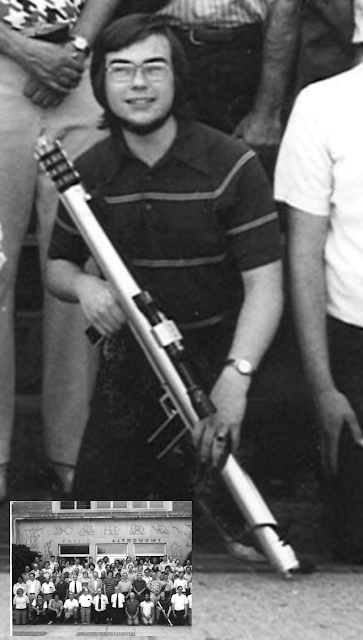My Schedule for Worldcon: Midamericon II
Aug. 15th, 2016 01:28 am
Jungian Mindscapes and Clement's Iceworld
Thursday 10:00 - 11:00, 2201 (Academic) (Kansas City Convention Center)
[I'm the second speaker in this academic session of two short talks.]
“The Red One” and Enduring Archetypes of Science Fiction’s First Golden Age:
The Jungian Mindscapes Campbell Inherited from the Writers of the Fin de Siècle
Charles Von Nordheim
The Search for Saar: Looking Back at Hal Clement's Iceworld with 21st-Century Science
William S. Higgins
Fermi National Accelerator Laboratory
Some scientific aspects of Hal Clement's 1951 novel Iceworld are notable 65 years later. First, in 1951 not one exoplanet was known. Clement would live to see an abundance of new planets circling distant stars. Furthermore, rather than seeking Earth-like planets, one may search for worlds Clement's sulfur-breathing aliens might inhabit comfortably. The planet-hunting Kepler spacecraft has identified at least one planet, Kepler 42c, where conditions approximate those of the imaginary world Saar. Second, in detail unusual for SF of its time, Iceworld explores a planet with remotely-operated spacecraft, anticipating the methods of the coming Space Age.
Kaffeeklatsch: Bill Higgins
Thursday 12:00 - 13:00, 2211 (KKs) (Kansas City Convention Center)
An hour of conversation with a few people who wish to converse with me. Attendees must sign up in advance Wednesday afternoon for the limited seating. Signup instructions are here. (I doubt actual coffee will be served.)
Other kaffeklatsch hosts in the same room at the same time—at different tables—will be Kathleen Ann Goonan, Brianna Spacekat Wu, and Christopher McKitterick.
Edison's Concrete Piano
Thursday 18:00 - 19:00, 2206 (Kansas City Convention Center)
Bill Higgins (Moderator), Dr. Jordin Kare, Allan Dyen-Shapiro, Howard Davidson, andyvanoverberghe
Even the greatest minds have some pretty strange ideas. In 1911, Edison decided to create a concrete piano. What other great, or extremely bizarre ideas have found their way to the US patent office? A look at the oddities that people have imagined.
Note: This panel has moved forward one hour from the original timeslot.
Where Science Fails
Friday 15:00 - 16:00, 2502B (Kansas City Convention Center)
Brother Guy Consolmagno SJ (Moderator), Bill Higgins, Anna Kashina, Dr Helen Pennington, Mr. Donald Douglas Fratz
Although scientists are supposed to follow the scientific method, sometimes that allow their human side to get ahead of them. What caused the crisis of replication in social psychology, the false alarm on cosmic inflation detection, or the announcement of cold fusion? How can these errors be avoided, and how do they damage the reputation of science?
Ask a Scientist
Saturday 15:00 - 16:00, 2210 (Kansas City Convention Center)
Mx Rachael Acks, Bill Higgins (Moderator), Dr. Claire McCague, Dr. Lawrence M. Schoen, Dr. Geoffrey A. Landis
Do you have a pressing question about the earth's warming, worm holes, advances in communication technology, cloning? A panel of scientists in varied areas of expertise are here to answer your scientific queries. Answers will be timed out at five minutes each, so don't ask for a detailed explanation of General Relativity! Please keep questions brief and specific.
Fizz and Fuse, the Reactor Brothers
Saturday 16:00 - 17:00, 3501H (Kansas City Convention Center)
Dr. Jordin Kare, Bill Higgins
In this humorous ad-lib chat, Jordin Kare and Bill Higgins diagnose people's spaceship (and other SF) problems in the style of "Car Talk."
Playback from Pluto
Sunday 15:00 - 16:00, 2502B (Kansas City Convention Center)
Bill Higgins
There's a treasure at the edge of the Solar System, a data recorder aboard the New Horizons spacecraft, sending Earth several gigabytes acquired during last summer's flyby of Pluto. The excitement of the initial encounter still lingers. Downlinks in recent months continue to illuminate the mysteries of Pluto, and 2019 brings us all new data. What will we learn?

















